- genevb's home page
- Posts
- 2025
- 2024
- 2023
- 2022
- September (1)
- 2021
- 2020
- 2019
- December (1)
- October (4)
- September (2)
- August (6)
- July (1)
- June (2)
- May (4)
- April (2)
- March (3)
- February (3)
- 2018
- 2017
- December (1)
- October (3)
- September (1)
- August (1)
- July (2)
- June (2)
- April (2)
- March (2)
- February (1)
- 2016
- November (2)
- September (1)
- August (2)
- July (1)
- June (2)
- May (2)
- April (1)
- March (5)
- February (2)
- January (1)
- 2015
- December (1)
- October (1)
- September (2)
- June (1)
- May (2)
- April (2)
- March (3)
- February (1)
- January (3)
- 2014
- December (2)
- October (2)
- September (2)
- August (3)
- July (2)
- June (2)
- May (2)
- April (9)
- March (2)
- February (2)
- January (1)
- 2013
- December (5)
- October (3)
- September (3)
- August (1)
- July (1)
- May (4)
- April (4)
- March (7)
- February (1)
- January (2)
- 2012
- December (2)
- November (6)
- October (2)
- September (3)
- August (7)
- July (2)
- June (1)
- May (3)
- April (1)
- March (2)
- February (1)
- 2011
- November (1)
- October (1)
- September (4)
- August (2)
- July (4)
- June (3)
- May (4)
- April (9)
- March (5)
- February (6)
- January (3)
- 2010
- December (3)
- November (6)
- October (3)
- September (1)
- August (5)
- July (1)
- June (4)
- May (1)
- April (2)
- March (2)
- February (4)
- January (2)
- 2009
- November (1)
- October (2)
- September (6)
- August (4)
- July (4)
- June (3)
- May (5)
- April (5)
- March (3)
- February (1)
- 2008
- 2005
- October (1)
- My blog
- Post new blog entry
- All blogs
Another SL09g vs. SL10j comparison
Similar to my previous blog entry, but now looking at tracks which did not match. I assigned unmatched tracks from SL10j a value of 1, and those from SL09g a value of zero. By taking profiles of this quantity vs. various other observables, I can see where tracks are lost going from SL09g to SL10j (profile value less than 0.5), or gained (profile value greater than 0.5). One should again keep in mind that this sample is dominated by pile-up tracks, for which distortion corrections are almost never right. Total statistics from ~1000 events is ~249k lost tracks from SL09g and ~262k lost tracks from SL10j (i.e. SL10j had more total global tracks with flag>0 to begin with).
Here we can see that while low pT tracks are gained, high pT tracks are lost, and there's a rise and fall at high pseudorapidity:
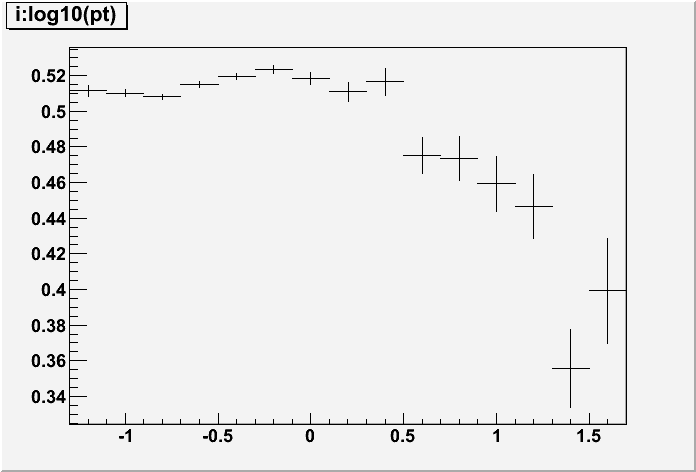

Vs. pt and eta (and stats shown on the right) shows that losses for high pT are at mid-rapidity, and high eta losses are at all pT.
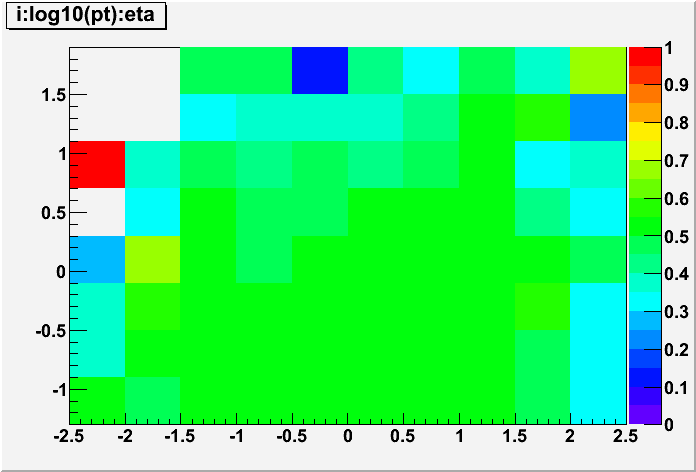
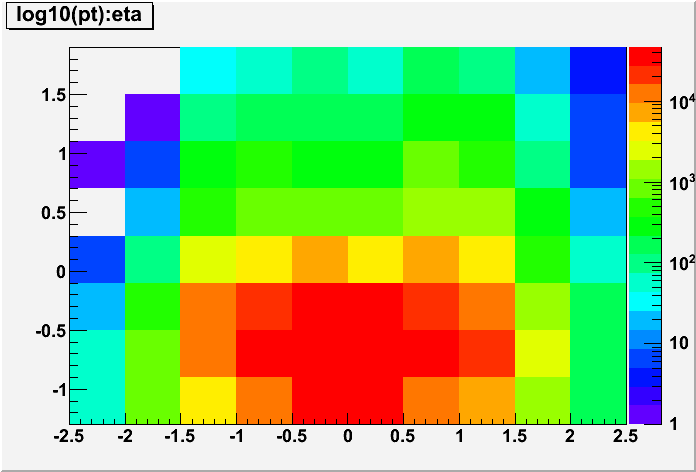
Vs. length shows a gain for very short tracks, and a loss for very long tracks. Not much change on average for the sweet spot of track lengths between 50 and 200 cm.
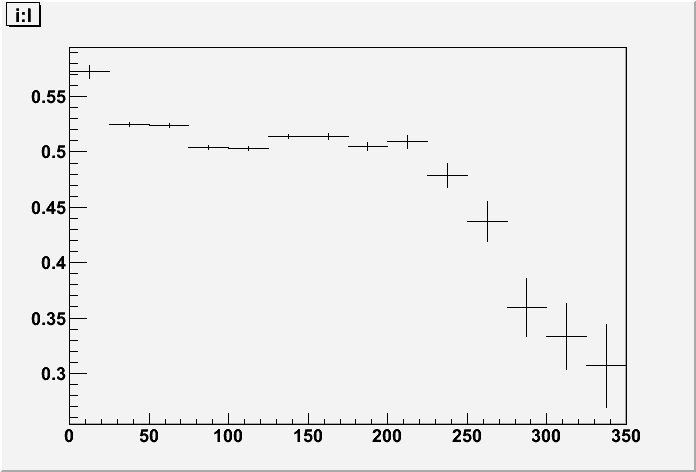
Vs. pT and length (stats on the right) High pT tracks cannot be very long, but even among them the losses occur mostly at long track lengths:
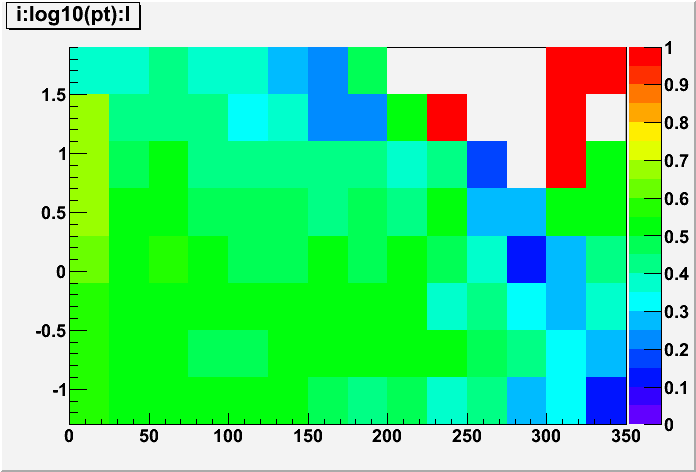
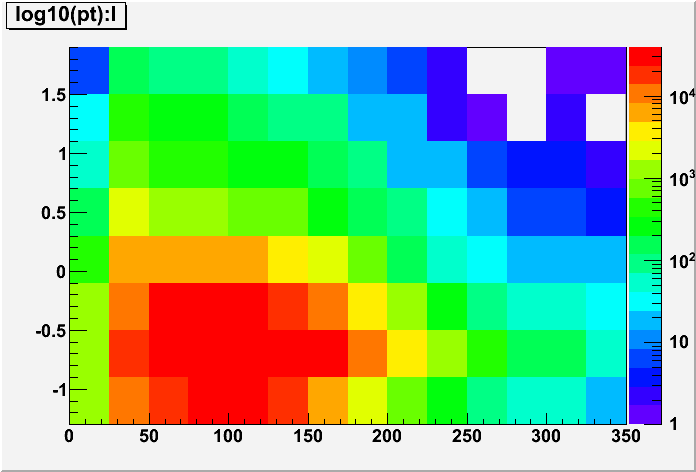
Vs. radius of the first point on the track shows a strong dependence, perhaps due to the updated GridLeak correction breaking more pile-up tracks?
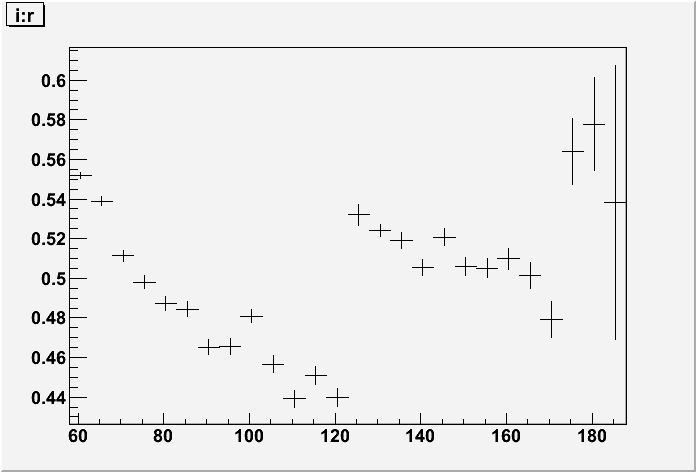
Vs. first point radius and sector (using tracks whose first and last points are either 50 cm east or west of the central membrane appropriately to avoid PCTs) shows that the losses appear greatest in the east sectors (13-24)
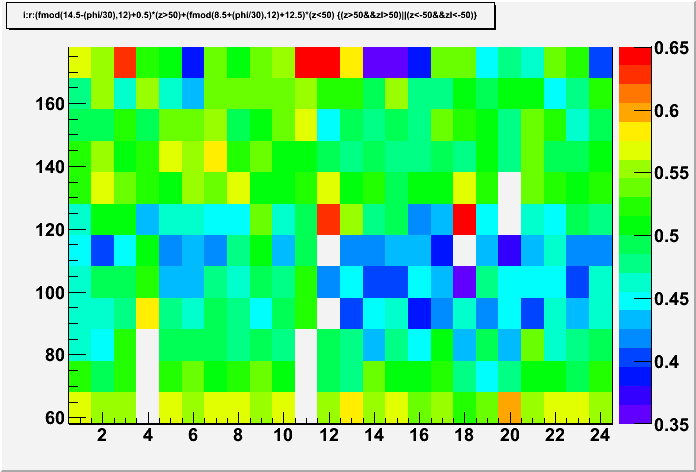
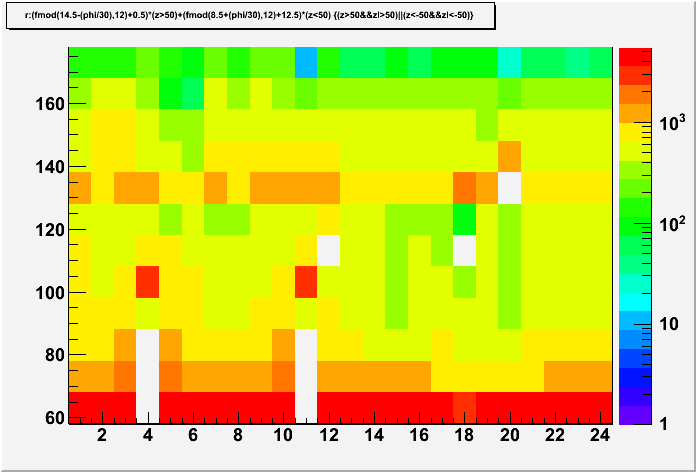
-Gene
- genevb's blog
- Login or register to post comments
